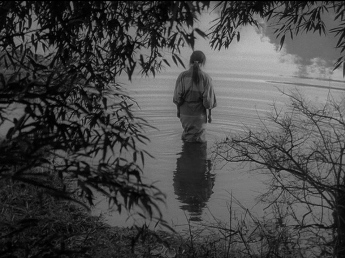Some time ago I came to the conclusion that the cinephilia we find most familiar and legible—the Sirk auteurists and the Tarantino fanboys, the art house connoisseurs and the chick flick loyalists, the western buffs and silent scholars—are not necessarily those with the deepest roots. Time and again I have been impressed by the quite genuine commitment of the original cultists—the horror aficionados. I’m talking here about those who grew up watching Lugosi and Karloff on local television stations and remember these transmissions with undiminished affection. Nowhere will you find less careerism or pretense. In my experience those who propound the virtues of The Texas Chain Saw Massacre or I Spit on Your Grave are often exceedingly sweet and sincere.
Unfortunately there are many discoveries of the horror archeologists that are not generally disseminated. The subject of today’s post is preposterously little known and invisible to the general film histories. One would think that a horror star with a name like Tod Slaughter would be hipster catnip.
Truth be told, I did not learn about Slaughter or his very interesting films Sweeney Todd, The Demon Barber of Fleet Street (1936) and Crimes in the Dark House (1940) until Dave Kehr’s column last year:
Slaughter, born in 1885, was a Victorian by birth as well as by sensibility: his grandly theatrical acting style reflects decades of touring the hinterlands in road company productions of shopworn melodramas. To hear his demented chuckle as he strangles a helpless victim or chases a shrieking virgin up the stairs, to watch as he literally rubs his hands together in evil glee or smoothes down the ends of his handlebar mustache, is to be transported back to an era of footlights and greasepaint. This is not camp exaggeration but a genuine relic of the time before Ibsen’s naturalism tamed the stage.
This is a broadly accurate account of Slaughter’s appeal.
I might add that the primitivism of Slaughter’s films remains their most absorbing quality. His victims may plot and strategize and concoct fantastic schemes to expose his villainy, but Slaughter approaches every obstacle in a remarkably consistent, untroubled way. No matter the threat, he strangles the bloke, or bludgeons him, or slits his throat. Strictly speaking, there’s no suspense on offer: Slaughter simply steps out of the shadows and eliminates his victim with sadistic relish. These nearly pre-narrative pleasures would be strikingly anti-social if the violence happened on anything resembling a social plane, but again Slaughter sidesteps the issue: despite the scenes being laid down in a specific historical milieu, Slaughter is a generic caveman mercenary. He makes lustful advances but thinks nothing of killing the busty biddie at the hint of an imagined threat. He plunders from his cadavers but has no nouveau riche ambitions. One supposes that he seeks only to implicate in situations with maximal potential for terror.
Which is all a way of saying that Slaughter is not only an assault on spectators’ stomachs but a formal affront to narrative cinema itself. His Sweeney Todd dates from 1936, but it feels more like a film from 1929 in its incessant, underdetermined underscoring. The same jaunty theme accompanies most every scene in the first half, whether expository or ghastly in its content. There is positively no attempt made to marshal the power of sound to foreshadow events or dictate a shift in audience emotion. This is not some aesthetic deficiency, for it clarifies the fundamental aim of the enterprise, namely to present a series of loosely connected, semi-narrativized feats of violence as if from some gruesome music hall revue. There are production values (low-budget but decent) and scripts and other characters, but these are formalities, concessions to more delicate sensibilities. We all know what we’re here for.
If anything, the violence in Sweeney Todd is even more liberated and comical than it is in something like Hawks’s Scarface. Children are abused with Fieldsian abandon. Every murder is performed with a smile. The audience is most definitely in on the whole dirty thing. One late scene finds a policeman obliviously eating one of Mrs. Lovett’s pastries. That the cannibalistic flavor of these baked goods is never explicitly spelled out in the film (and how could it be?) matters little, for anyone familiar with the legend of Todd is already complicit in this joke. The movie demands a certain knowing incredulousness that is not so far removed from leering at a railway disaster.
Crimes at the Dark House is, if anything, more vile, opening as it does with Slaughter driving a spike into a sleeping prospector’s ear. The camera’s quick pan away from this disgusting act is among the most transparent moments of feigned tastefulness in film history. There is also the intrusion of false etherealness, represented by an elusive woman in white who materializes by the window off and on. But lyricism is basically incompatible with lines like “I’ll feed your entrails to a pig!” As well it should be, I suppose. In the very least, Slaughter’s films represent some kind of outer limit for the number of convolutions and facades that a respectable, highly regimented production system thought necessary to present the lowest of thrills.

No comments:
Post a Comment